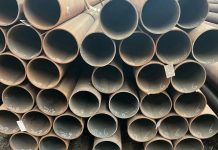A network cabinet is the heart of any IT infrastructure, and proper ventilation is key to ensuring optimum performance for all network equipment, such as servers, routers, and switches that are housed within it. Overheating can lead to equipment downtime, reduced lifespan, and even permanent damage. With the rise of cloud computing and IT virtualization, data centers are increasingly running into issues related to power, cooling, and space management.
This blog post will provide insights into why proper ventilation in network cabinets is crucial and tips to optimize airflow for a longer equipment lifespan.
The Importance of Ventilation in Network Cabinets
High-performance network equipment generates a lot of heat, and if it is not adequately ventilated, it can cause overheating, which can cause malfunctioning, equipment failure, and potential data loss. Proper ventilation can prevent equipment from overheating and maintain a stable temperature to ensure that the equipment operates at optimal levels.
One of the primary functions of ventilation is to maintain clean airflow by getting cool air to the equipment and removing hot air. Proper ventilation is essential to maintain a healthy network and keep the equipment running smoothly.
Significant Factors Influencing Cabinet Ventilation
There are several factors that influence the ability of a network cabinet by stable Network Cabinet Manufacturers to provide adequate ventilation to its equipment.
The location of the cabinet, temperature, humidity, and density of equipment within the cabinet all play a significant role in ventilation. Cabinets placed in areas with no ventilation and high temperatures will struggle to provide adequate cooling and could potentially cause overheating.
Higher equipment densities result in higher heat output, while lower-density cabinets will have more space between them, which enables easier airflow. Therefore, careful consideration of these factors must be taken when selecting and configuring network cabinets.
Tips and Best Practices to Enhance Ventilation
Several tips need to be in mind when attempting to optimize ventilation for your network cabinets.
- The first step is to ensure that the cabinet is placed in a location where it has adequate access to fresh air flow. This means placing the cabinet in a room or location that has adequate air conditioning and air handling systems to regulate temperature and humidity levels.
- Secondly, cabinets should be equipped with fans and other cooling systems to provide a constant supply of fresh air to the equipment.
- Third, proper cable management within the cabinet is essential to ensure proper airflow throughout the cabinet.
- Fourth, avoid overcrowding the equipment and try to keep the equipment level low as possible to prevent hot air pockets from forming.
- Lastly, ensure that it is adequately vented, and use blanking panels to cover unused spaces.
The Benefits of Proper Ventilation
Proper ventilation in network cabinets leads to a reduced risk of equipment failure, downtime, and replacements, which ultimately leads to high cost and time savings. Better ventilation promotes better airflow, which translates to longevity for equipment in the cabinet.
A well-ventilated cabinet ensures that maximum performance is maintained by maintaining the optimal temperature throughout. Additionally, proper ventilation means that the cabinet&’s temperature is regulated, preventing humidity, dust, and other contaminants from affecting the equipment.
Conclusion
Network cabinets form the cornerstone of IT infrastructure, and adequate ventilation is essential for their optimum performance. Overheating results in equipment failure and potential data loss, leading to expensive replacements that act as a significant drain on IT budgets. Proper ventilation increases equipment longevity, leading to cost savings in replacement and maintenance expenses. Therefore, it is essential to invest in proper ventilation measures, ensure cabinets are placed in locations with adequate airflow, and remain vigilant of the factors affecting ventilation to keep the equipment operating efficiently for the long haul.









